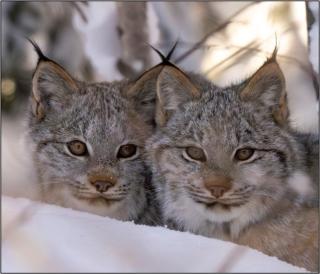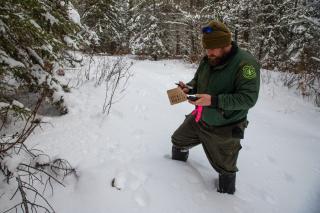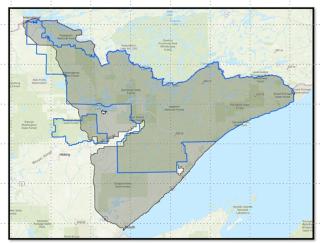The legacy of the Trapper’s Lake Female Canada lynx
MINNESOTA—Early last spring, a Canada lynx carcass was discovered on the edge of a Superior National Forest road by forest volunteer, Gary Olson. Little remained of the carcass except some hair and most of the skeleton (the skull was missing). Through detective work, Superior National Forest wildlife staff were able to figure out the cat’s identity. A fur sample was sent to the USDA Forest Service Rocky Mountain Research Station National Genomics Center for Wildlife and Fish Conservation. The DNA results revealed she was GLNR-S-571, also known as “The Trapper’s Lake Female.”
From 2014 to 2024, forest wildlife staff and volunteers collected 27 scats from this individual. The Trapper’s Lake Female was a kitten born in the Isabella, Minn. area in 2013, making this lynx 11 years old at the time of her death. This was the oldest lynx in the Superior National Forest database.
She was old enough that she may have died from natural causes; but due to the advanced state of decay of the carcass, vehicle collision, predation or other possible causes of mortality are all possibilities. She had many litters of kittens over the years. Through DNA analysis, staff are confident she had offspring with her each year from 2019 to 2024, and it’s highly likely she had other litters prior to 2019 that were not detected. We are hopeful that she will be survived by them, and we will look to detect those kittens in the coming monitoring seasons.

Snow tracking and other methods used to obtain genetic samples have confirmed presence of Canada lynx across northeastern Minnesota since December 2000 and confirmed reproduction of lynx every year since 2004. Since 2008, Superior National Forest wildlife biologists have conducted winter snow tracking and maintain a database of genetically confirmed Canada lynx to document their occurrence, persistence and reproduction in Minnesota. Read the latest annual DNA Report here: 2024 Superior National Forest Canada lynx DNA report.
Lynx are broadly distributed across the extensive boreal spruce-fir forests from eastern Canada to Alaska and extend into the lower 48 in Washington, the Rocky Mountains, Minnesota, Maine and a small portion of New Hampshire. The U.S. Fish and Wildlife Service designated Canada lynx as threatened in the contiguous United States under the Endangered Species Act in 2000. This designation was based solely on the inadequacy of regulatory mechanisms on federal public lands at the time of listing, which is where most lynx habitat occurs. Since listing, the Superior National Forest has incorporated Canada lynx habitat management into its forest plan. Additionally, most of the Superior National Forest is designated Critical Habitat for lynx. The U.S. Fish and Wildlife Service recently released a new recovery plan for the species. Note that the press release features a photo of a northern Minnesota Canada lynx taken by Superior National Forest Wildlife Biologist Ryan Pennesi. The recovery plan cites climate change as the greatest threat to lynx.

Canada lynx are highly adapted for traveling and hunting over snow. Their fur-covered paws are large for their body size and function like snowshoes. Averaging 20-30 pounds, lynx eat animals such as red squirrels and grouse, however snowshoe hares make up most of their diet. If climate change means a future with longer periods of shallower snow, competing predators such as coyotes and bobcats may kill more hares, adding hunting pressure that may depress the hare population, ultimately dragging down lynx numbers as well. Climate change could also increase hybridization between lynx and bobcats. Canada lynx-bobcat hybrids were first detected in Minnesota in December 2001 and 13 have been documented since then.


